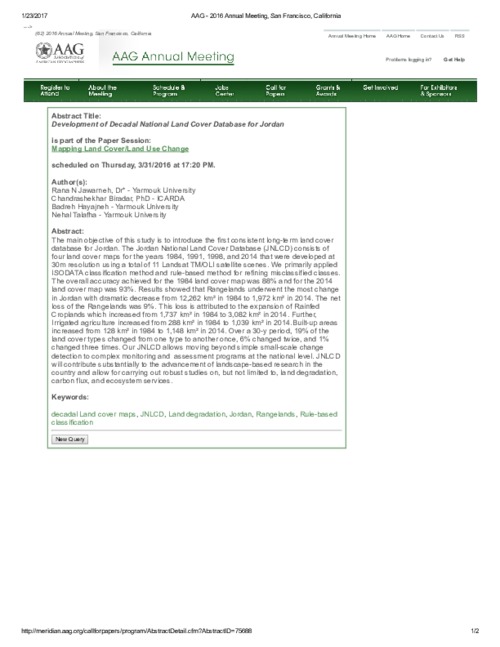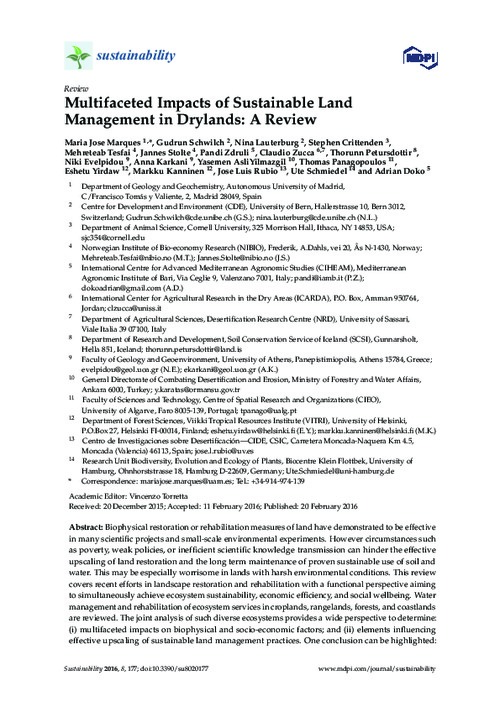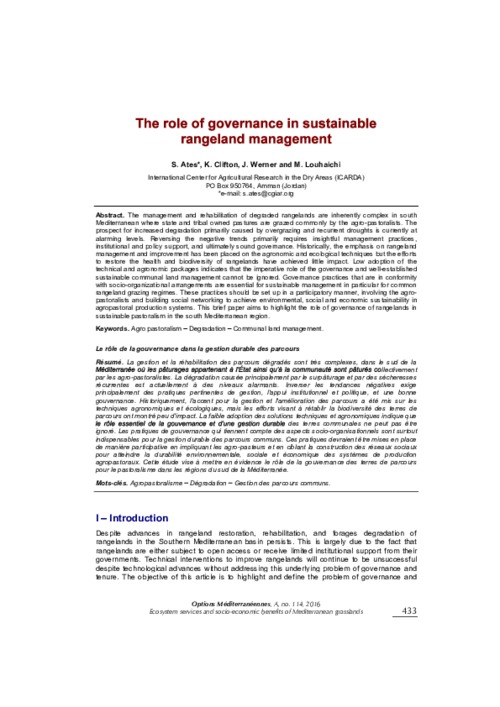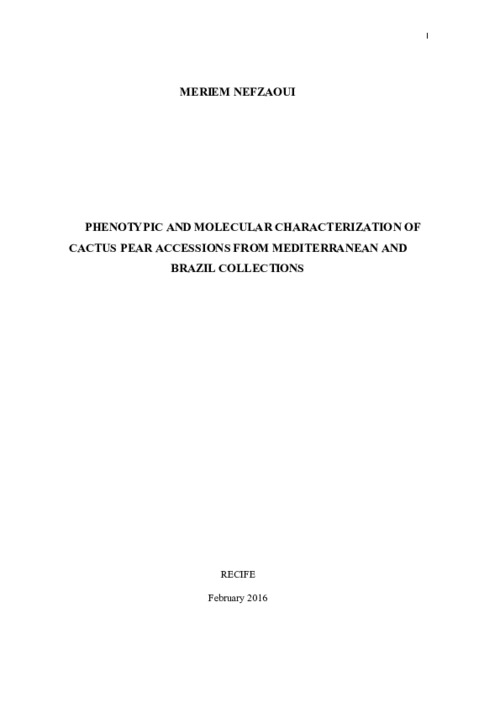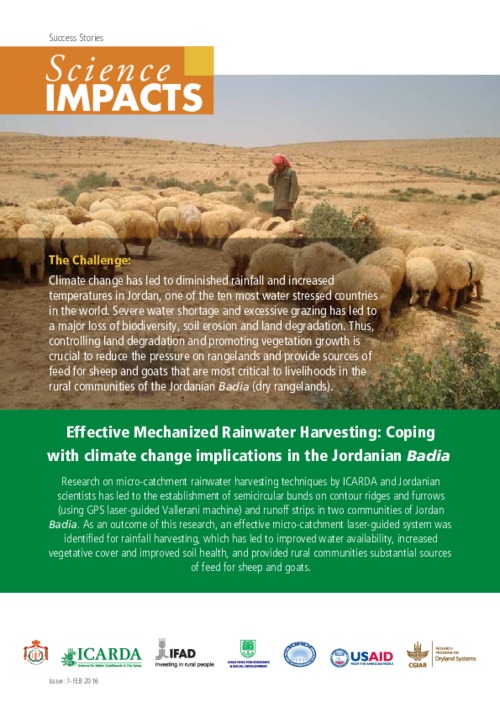Location
The International Center for Agricultural Research in the Dry Areas (ICARDA) was established in 1977. It is one of 15 such centers supported by the CGIAR. ICARDA’s founding mandate to promote agricultural development in the dry areas of developing countries remains highly relevant today.
ICARDA works with a tight focus on the problem-solving needs of resource-poor farmers, achieving this through the in-field delivery of its research outputs. Although global food production has increased by 20 per cent in the past decade, food insecurity and poverty remain widespread, while the natural resource base continues to decline.
International research centers such as ICARDA, which have helped drive previous improvements, continue to deliver new technologies to support sustainable growth in agriculture, and crucially, to work with a wide range of partners to accelerate the dissemination of these technologies.
ICARDA’s biggest strength is its staff – 600 highly skilled men and women from 32 countries. Our research and training activities cover crop improvement, water and land management, integrated crop-livestock-rangeland management, and climate change adaptation.
Other interventions include:
- Water harvesting - supplemental irrigation and water-saving irrigation techniques
- Conservation agriculture methods to reduce production costs and improve sustainability
- Diversification of production systems to high-value crops – horticulture, herbal and medicinal plants
- Integrated crop/rangeland/livestock production systems including non-traditional sources of livestock feed
- Empowerment of rural women – support and training for value-added products.
The ICARDA genebank holds over 135,000 accessions from over 110 countries: traditional varieties, improved germplasm, and a unique set of wild crop relatives. These include wheat, barley, oats and other cereals; food legumes such as faba bean, chickpea, lentil and field pea; forage crops, rangeland plants, and wild relatives of each of these species.
ICARDA’s research portfolio is part of a long-term strategic plan covering 2007 to 2016, focused on improving productivity, incomes and livelihoods among resource-poor households.
The strategy combines continuity with change – addressing current problems while expanding the focus to emerging challenges such as climate change and desertification.
We work closely with national agricultural research systems and government ministries. Over the years the Center has built a network of strong partnerships with national, regional and international institutions, universities, non-governmental organizations and ministries in the developing world and in industrialized countries with advanced research institutes.
THE ‘DRY AREAS’
Research and training activities cover the non-tropical dry areas globally, using West Asia, North Africa, Central Asia and the Caucasus as research platforms to develop, test, and scale-out new innovations and policy options.
Dry areas cover 41 per cent of the world’s land area and are home to one-third of the global population. About 16 per cent of this population lives in chronic poverty, particularly in marginal rainfed areas. The dry areas are challenged by rapid population growth, frequent droughts, high climatic variability, land degradation and desertification, and widespread poverty. The complex of relationships between these challenges has created a "Poverty Trap."
Members:
Resources
Displaying 216 - 220 of 431Development of Decadal National Land Cover Database for Jordan
The main objective of this study is to introduce the first consistent long term land cover database for Jordan. The Jordan National Land Cover Database (JNLCD) consists of four land cover maps for the years 1984, 1991, 1998, and 2014 that were developed at 30m resolution using a total of 11 Landsat TM/OLI satellite scenes. We primarily applied ISO DATA classification method and rule based method for refining misclassified classes. The overall accuracy achieved for the 1984 land cover map was 88% and for the 2014 land cover map was 93%.
Multifaceted Impacts of Sustainable Land Management in Drylands: A Review
Biophysical restoration or rehabilitation measures of land have demonstrated to be effective
in many scientific projects and small-scale environmental experiments. However circumstances such
as poverty, weak policies, or inefficient scientific knowledge transmission can hinder the effective
upscaling of land restoration and the long term maintenance of proven sustainable use of soil and
water. This may be especially worrisome in lands with harsh environmental conditions. This review
The role of governance in sustainable rangeland management
The management and rehabilitation of degraded rangelands are inherently complex in south
Mediterranean where state and tribal owned pastures are grazed commonly by the agro-pastoralists. The
prospect for increased degradation primarily caused by overgrazing and recurrent droughts is currently at
alarming levels. Reversing the negative trends primarily requires insightful management practices,
institutional and policy support, and ultimately sound governance. Historically, the emphasis on rangeland
Phenotypic and Molecular Characterization of Cactus Pear Accessions from Mediterranean and Brazil Collections
Around 2.5 billion people – 30 percent of the world’s population – live in the dry areas, which cover more than 40 percent of the world’s land surface. Scarce natural resources, land degradation and frequent droughts severely challenge food production in these areas. Both North Africa (Morocco, Algeria, Tunisia) and the North East of Brazil fall under arid and semi-arid climate. Cacti have developed phenological, physiological and structural adaptations for growth and survival in arid environments where they have multiple functions (food, feed, soil conservation, etc.).
Effective Mechanized Rainwater Harvesting: Coping with climate change implications in the Jordanian Badia
Research on micro-catchment rainwater harvesting techniques by ICARDA and Jordanian
scientists has led to the establishment of semicircular bunds on contour ridges and furrows
(using GPS laser-guided Vallerani machine) and runoff strips in two communities of Jordan
Badia. As an outcome of this research, an effective micro-catchment laser-guided system was
identified for rainfall harvesting, which has led to improved water availability, increased
vegetative cover and improved soil health, and provided rural communities substantial sources



